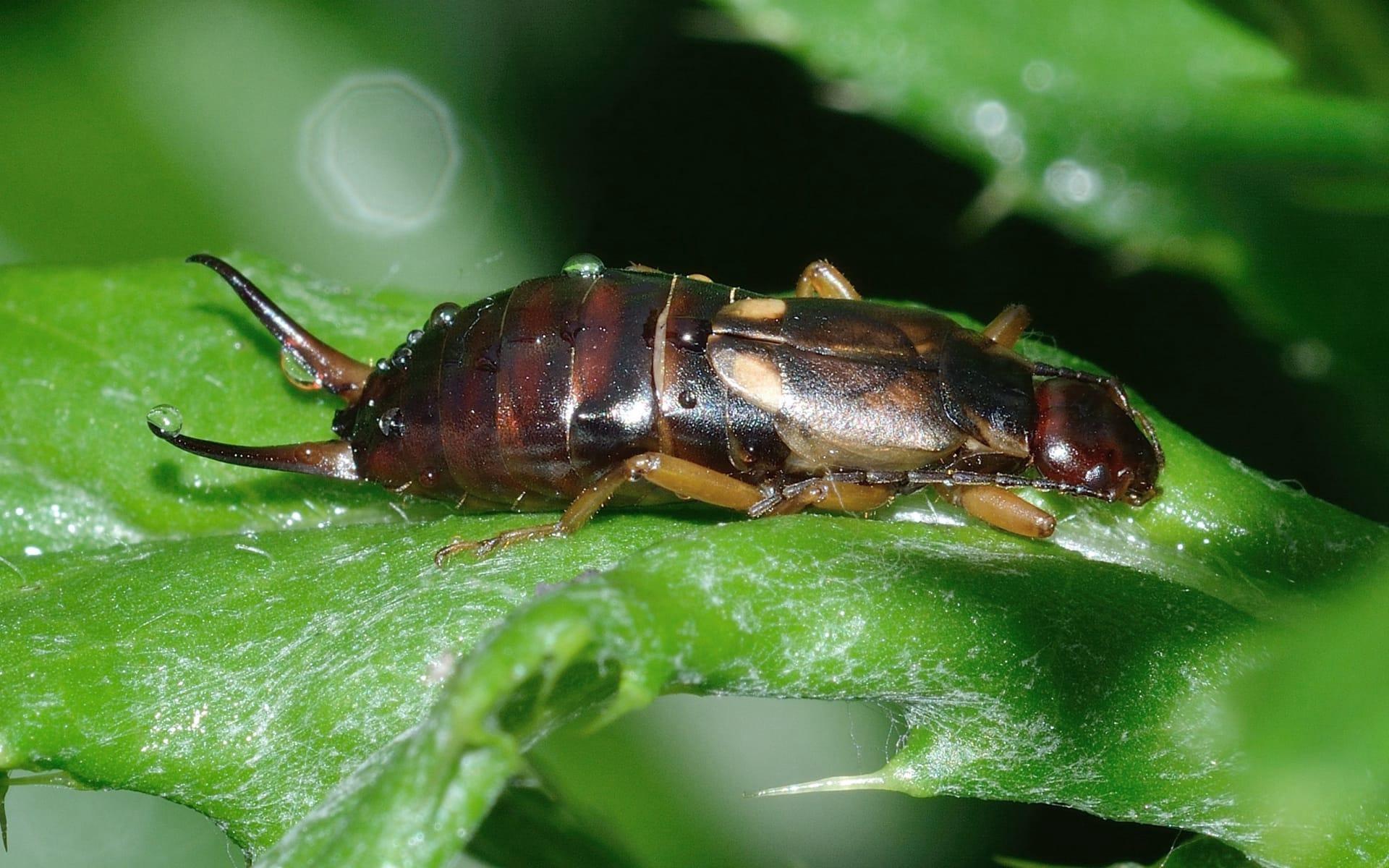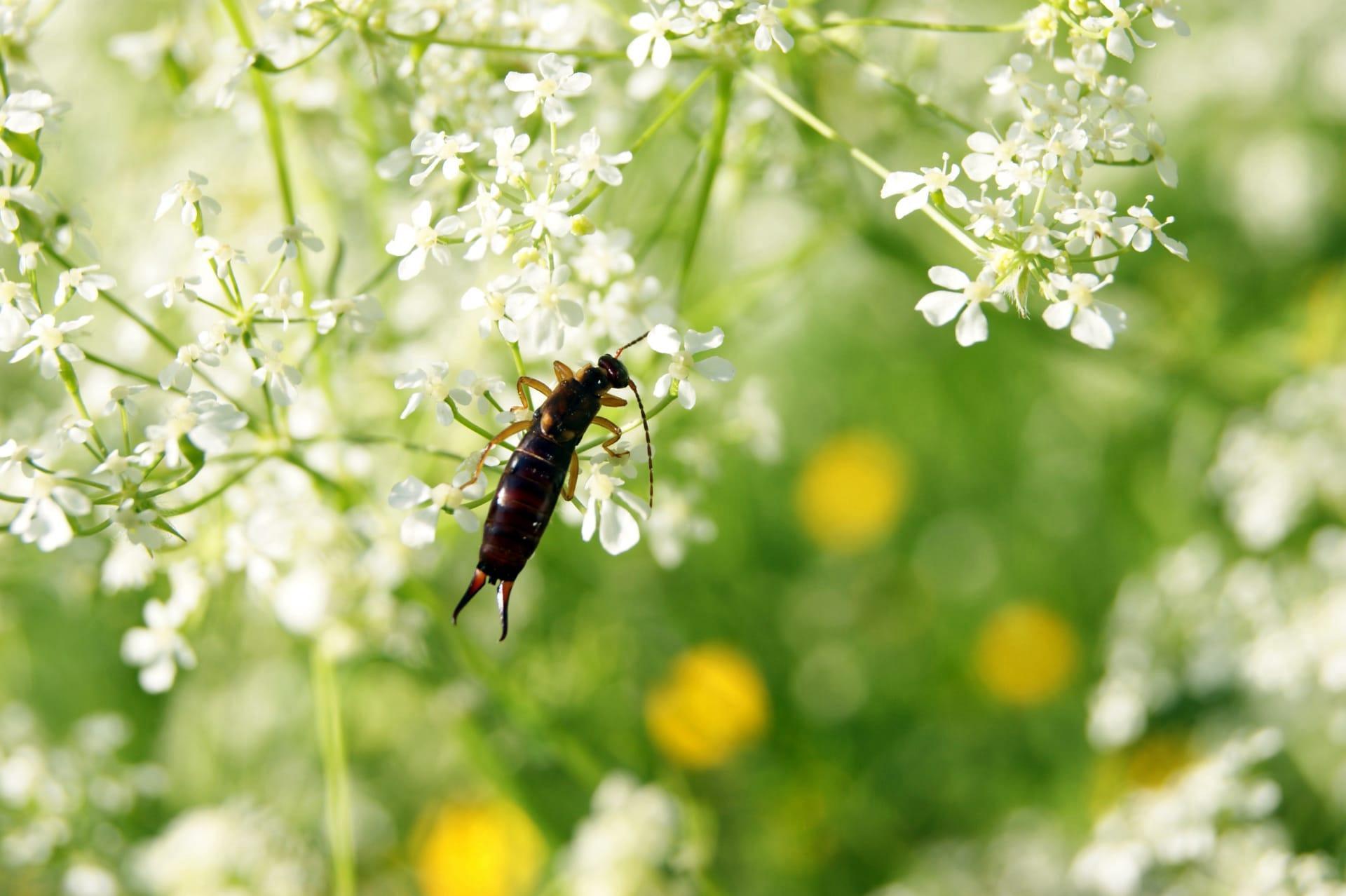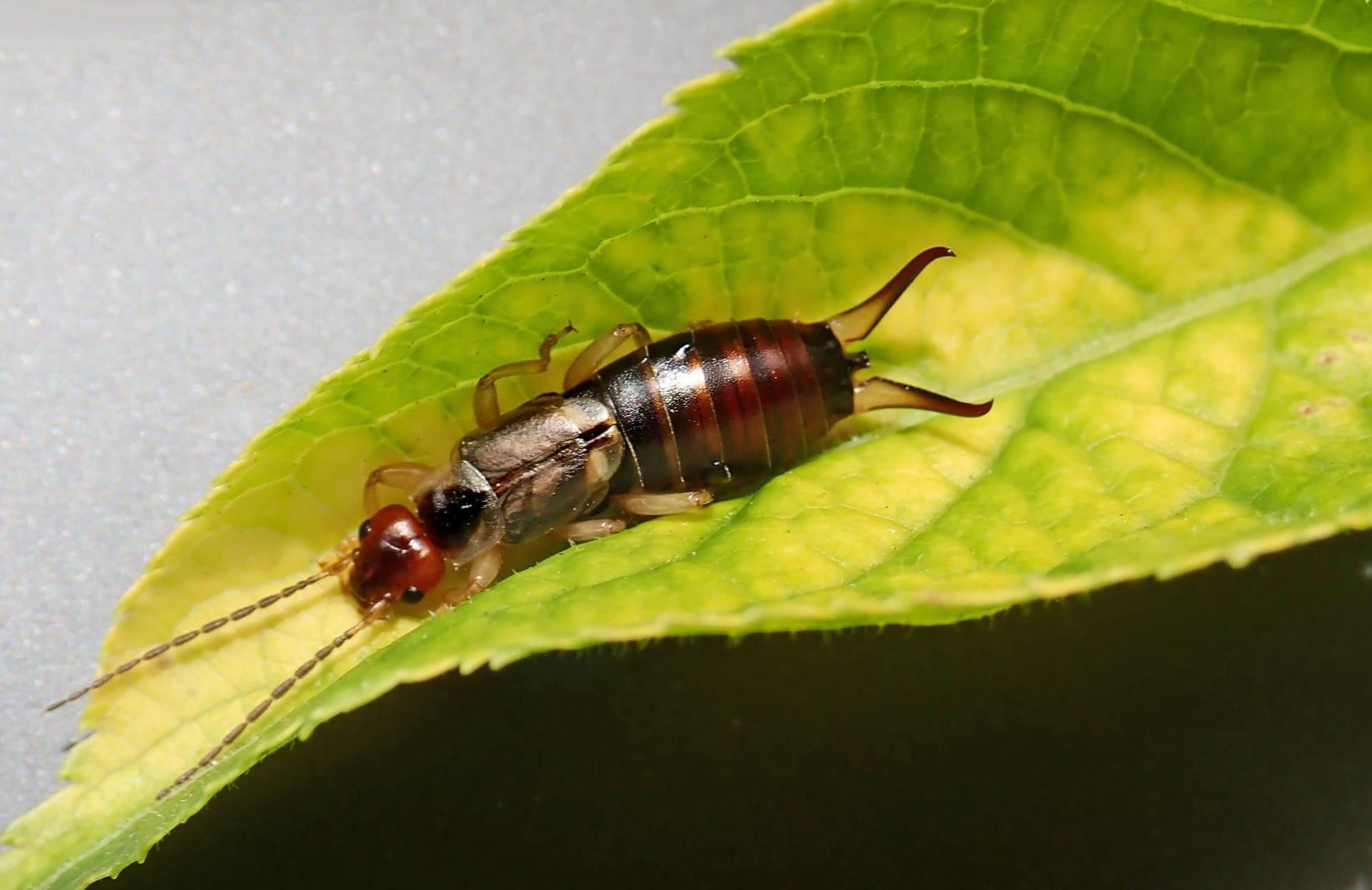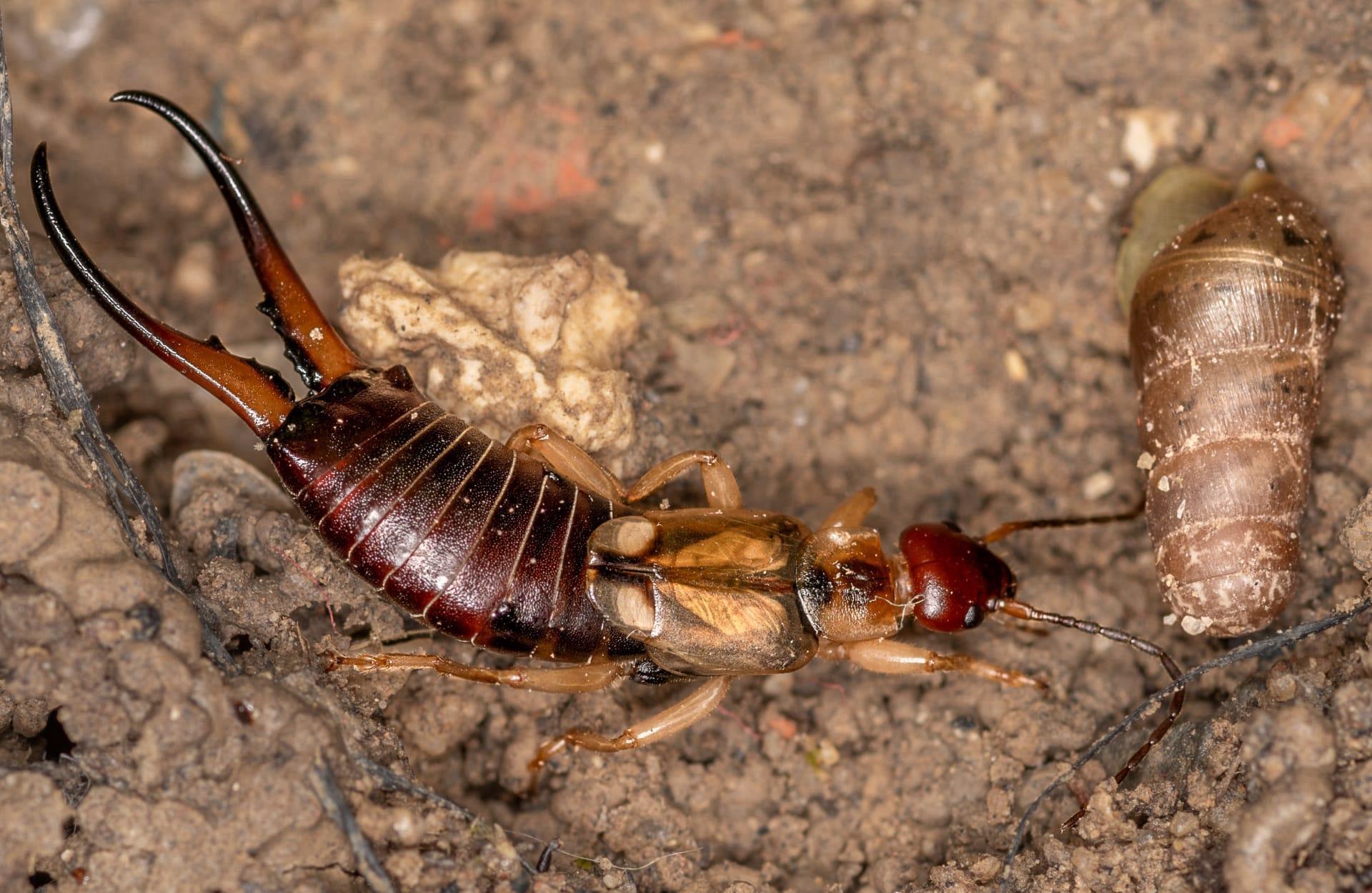1
Earwigs are quite the contortionists! Unlike most other insects, they can fold their wings in a complex, origami-like manner. An earwig's hindwings are unique in the insect world, with a design that allows them to be neatly tucked away under their short, leathery forewings. These wings can expand to 10 times their folded size, making them one of the most compact wing designs in nature. This remarkable folding mechanism is not just for show; it enables earwigs to quickly escape predators and slip into narrow crevices with ease.
Speaking of their name, "earwig" comes from an old English term, "earwicga," which literally means "ear creature." This stems from a centuries-old myth that these insects crawl into human ears to lay eggs. While it's a spooky tale, it's just that – a tale. In reality, earwigs are harmless to humans and don't have a particular interest in our ears. They are much more focused on hiding in damp, dark places and feasting on decaying plant material and insects.

2
Earwigs are night owls of the insect world, being primarily nocturnal. They spend their days hiding in cool, moist areas – under rocks, inside flower pots, or amongst garden debris. When the sun sets, they come out to play, scavenging for food. Their diet is quite diverse, including plants, other insects, and decaying organic matter. This feeding habit makes them both a gardener's friend and foe – they help in decomposing organic material but can also munch on healthy plants.
These critters are also quite the family insects. Surprisingly, female earwigs are attentive mothers, a rare trait in the insect kingdom. Post-laying eggs, they diligently guard and clean their brood, ensuring the eggs are free from mold and safe from predators. This maternal care extends to the newborns too, as the mother earwig will continue to look after her young until their second molt, a level of parental care almost unheard of among insects.

3
Earwigs have a pair of pincers on their rear, known as cerci, that are quite versatile. These pincers are used for defense, hunting, and sometimes during mating rituals. The shape of these cerci can also help you determine an earwig's gender – males typically have curved pincers, while females have straighter ones. Interestingly, despite their intimidating appearance, the pincers are not usually harmful to humans and are more of a tool for the earwig's survival in the wild.
Another fascinating aspect of earwigs is their communication method. They use pheromones to communicate various messages, such as signaling distress or marking trails. This chemical communication is vital in their nocturnal lifestyle, helping them find mates and alert others of potential dangers. Additionally, they can also produce a foul-smelling liquid as a defense mechanism, deterring predators and keeping their foes at bay.

4
Earwigs have a curious relationship with humidity. They thrive in moist environments and can often be found in high-humidity areas of a home, like bathrooms and kitchens. This preference is due to their need to keep their exoskeletons moist for optimal health. However, excessive dryness can be lethal to them, leading to desiccation and death. This sensitivity to humidity levels makes them good indicators of environmental moisture conditions.
Despite their somewhat fearsome appearance, earwigs play a beneficial role in the ecosystem. They act as natural recyclers, breaking down decaying plant material and contributing to soil health. This process aids in nutrient cycling, enriching the soil and supporting plant growth. Additionally, by preying on various garden pests, they help in natural pest control, making them a useful ally in maintaining the balance in garden ecosystems.

5
Earwigs are not just ground dwellers; they are also adept climbers. They can scale walls and even trees with ease, searching for food or escaping predators. This ability allows them to access a variety of habitats, from garden floors to the canopies of trees. It's not uncommon to find them on the higher leaves of plants, seeking out insects or shelter.
Lastly, the lifespan of an earwig is relatively short but eventful. They typically live for about one year, undergoing several molts as they mature. During their life, they experience a complete metamorphosis – from egg to nymph, and finally to adult. Each stage presents different challenges and behaviors, making the life cycle of an earwig a fascinating journey from birth to adulthood, filled with adaptation and survival.